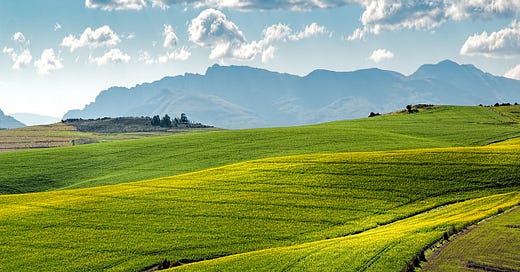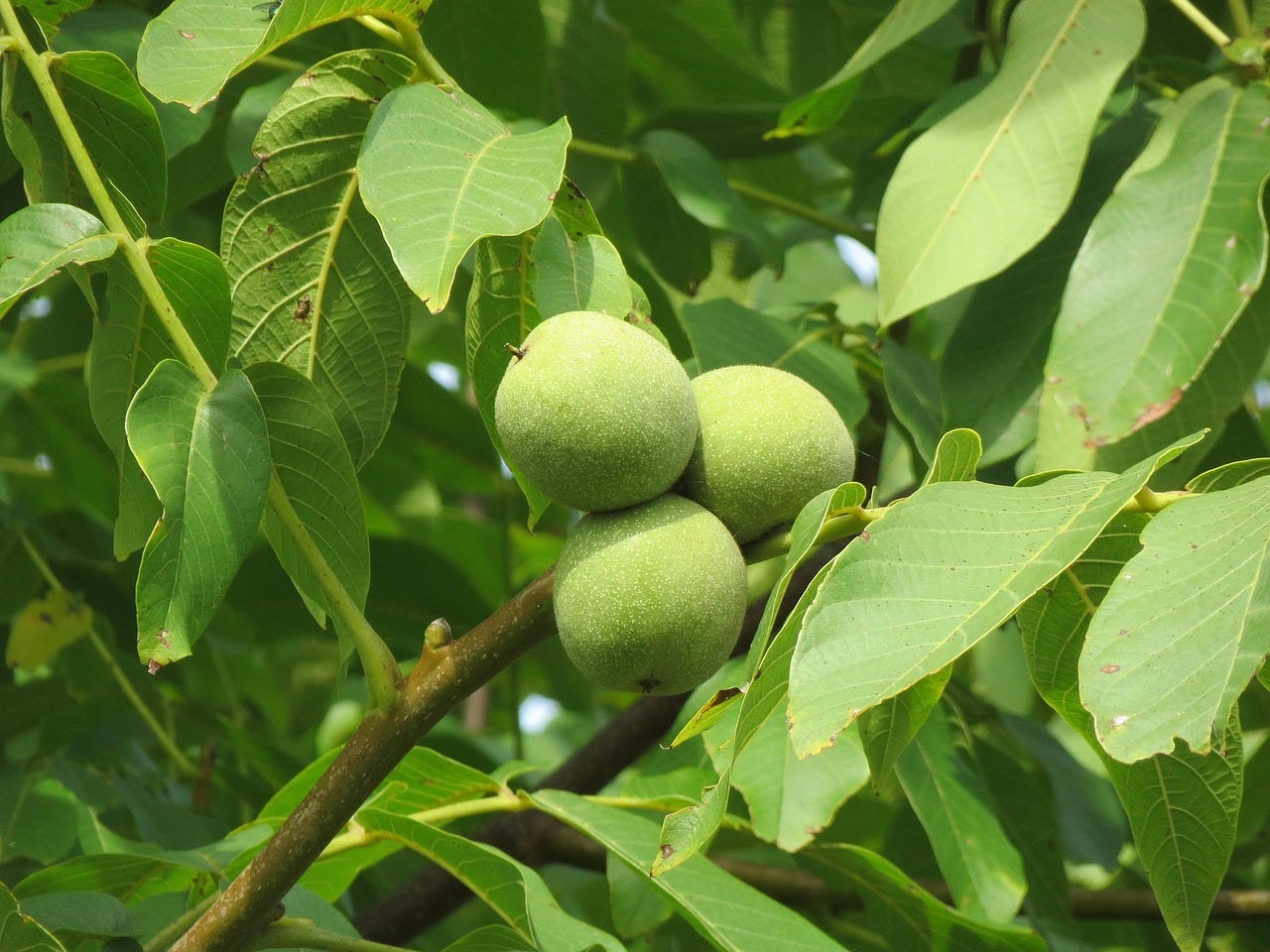links to the research papers can be found at the end of the article.
Food Security and Local Resilience
The food security of a community relies on its ability to guarantee stable and sufficient access to healthy and nutritious food for all its residents. In the face of economic, climate, and geopolitical crises, strengthening local food autonomy is becoming a priority.
Community gardens play a vital role in this dynamic. They enable residents to grow part of their own food, thereby reducing their dependence on long and vulnerable supply chains. A study published in BMC Public Health in 2022 systematically reviewed the effects of community gardens on physical and psychosocial health, health behaviours, and community outcomes. It found that community gardening was associated with higher fruit and vegetable intake, positive psychosocial and community outcomes, but mixed effects on physical health.
By promoting local cultivation, communities can reduce their ecological footprint by limiting the transport of foodstuffs. Moreover, these initiatives encourage food diversity by reintroducing old varieties adapted to local conditions.
Shared gardens and urban farms are also useful tools in the fight against food insecurity. They provide an alternative for vulnerable populations, allowing them access to quality food at a lower cost. A study from 2022 on community food security found that such initiatives reduce household food expenses and enhance resilience against fluctuations in food prices.
A recent study has shown how medium-sized cities can survive a global food chain collapse. Urban agriculture could provide around 1/5th of food needs, and surrounding farms, covering a minimum of 1,140 hectares, could provide the rest. Putting a further 110 hectares to agro-fuels would provide the energy needed for the agricultural machines.
Encouraging local food production and cooperation between citizens reinforces food sovereignty and allows communities to better withstand crises.
Why Grow Your Own Fruit and Vegetables?
Growing your fruit and vegetables provides food autonomy and a better quality of life. Even a modest garden allows one to reconnect with natural rhythms, step back from daily pressures, and engage in an activity beneficial for both physical and mental well-being.
The Physical and Mental Benefits of Gardening
Gardening is widely recognised for its positive effects on physical and mental health. A systematic review published in Systematic Reviews in 2024 analysed 40 studies and concluded that gardening and horticultural therapy have a significant impact on general well-being, quality of life, and mental health.
Physically, gardening is a full-body activity that improves mobility, coordination, and muscle strength. A study published in The Lancet Planetary Health in 2023 showed that people who garden increase their weekly physical activity by an average of 42 minutes, which helps prevent cardiovascular diseases and diabetes.
Gardening is also beneficial for mental health. It reduces stress, anxiety, and symptoms of depression. A meta-analysis published in BMC Public Health in 2025 revealed that gardening activities have a moderate effect on improving mental health, particularly in people with chronic conditions.
Exposure to nature and interaction with plants have calming effects. Gardening stimulates the production of serotonin and dopamine, neurotransmitters involved in mood regulation. It also fosters mindfulness, helping people focus on the present moment and reduce negative thoughts.
Lastly, gardening encourages social interactions and a sense of community. Shared gardens and exchanges among gardeners strengthen social bonds, a key factor in psychological well-being.
On Diet and Nutrition
The diversity of foods consumed has dramatically decreased over time. Today, 75% of our diet comes from just 12 plant species and 5 animal species. However, there are hundreds of thousands of edible plants, many of which remain underutilised.
Beyond this reduction in diversity, modern cultivated varieties have seen their nutritional quality decline.
According to a study published by Donald R. Davis in 2009 in the Journal of HortScience, fruits and vegetables grown before the 1950s were richer in calcium, iron, phosphorus, copper, vitamins B2 and C, as well as potassium. This decline is largely due to modern farming methods that favour high yields and rapid plant growth at the expense of nutritional composition.
A more recent study published in MDPI Foods in 2024 confirmed that the nutritional quality of food has declined significantly over the past 60 years, again, due to farmers choosing high-yielding varieties over highly nutritious ones.
Comparison Between Rapeseed and Walnut Cultivation
I watched a documentary film recently about the car industry. It highlighted how said industry manipulated the world into accepting the car and the subsequent catastrophic consequences. It’s very good. It would be good to do a similar film about the agro-industry. The agricultural industries are linked together, they will promote ways of producing food that require extensive land areas, intensive use of very expensive machinery, and the massive use of fertilisers and synthetic chemicals. One hand is shaking the other. The EU was pushed to encourage food oil production, and the industries promoted growing rapeseed. This type of crop requires all the above and generates massive profits for the industries producing the machines, seeds, and chemicals. We have been duped yet again.
In 2024, 1.35 million hectares were dedicated to rapeseed cultivation for oil production in France. Let’s compare this crop with walnut farming in terms of yield and environmental impact:
- Oil Yield
- European walnut: 1,500 to 14,400 kg of oil per hectare
- Rapeseed: 1,630 kg of oil per hectare
Walnut orchards require fewer chemical inputs and offer potentially higher oil yields. Moreover, there is a tradition of sheep grazing in walnut orchards, particularly in regions such as Isère and Drôme in France— a practice that limits herbicide use and contributes to natural soil fertilisation.
Nutritional Comparison of Walnut and Rapeseed Oil
Walnut oil is considered one of the most nutritious vegetable oils due to its high content of polyunsaturated fatty acids, particularly omega-3. A study published in Frontiers in Nutrition in 2022 found that walnut oil contains high levels of antioxidants and polyunsaturated fatty acids, making it beneficial for cardiovascular health.
In 2024 the ten top Euro countries put around 6 million hectares to rapeseed. The total area, except in France, is less than in previous years. Climate change is making it harder to produce rapeseed in some areas. Had we adopted walnuts instead of rapeseed, then we would have 6 million hectares of walnut orchards drawing down CO2 and producing a highly nutritious crop. These orchards would need far fewer inputs, be better for biodiversity, and would also produce lamb and wool (good for clothing and house insulation). Another product from these orchards is walnut shells, which have a heating power comparable to wood, around 4,300 Kcal/Kg.
Conclusion
Given the current food and environmental challenges, growing one’s own fruit and vegetables, valuing edible wild plants, and promoting sustainable agricultural practices are accessible solutions for all.
Community gardens and cultivating ancient varieties help strengthen local food security, preserve biodiversity, and support physical and mental well-being.
The choice between large-scale crops like rapeseed and agroforestry systems integrating walnut trees is shaped by environmental and economic considerations. Reintroducing traditional methods, such as grazing livestock in orchards or using wild plants, could provide a viable alternative to increasingly intensive and extensive agriculture.
links
https://systematicreviewsjournal.biomedcentral.com/articles/10.1186/s13643-024-02457-9
https://www.health.harvard.edu/staying-healthy/sowing-the-seeds-of-better-health
https://eajournals.org/wp-content/uploads/Addressing-Community-Food-Security.pdf
https://bmcpublichealth.biomedcentral.com/articles/10.1186/s12889-025-22263-9
https://www.community-gardening.org/how-can-community-gardens-help-with-food-insecurity/
https://www.bbc.com/future/bespoke/follow-the-food/why-modern-food-lost-its-nutrients
https://www.mdpi.com/2304-8158/13/6/877
https://www.eachgreencorner.org/2023/06/23/why-our-fruits-and-vegetables-are-not-as-nutritious-as-anymore/
https://journals.plos.org/plosone/article?id=10.1371/journal.pone.0321203






